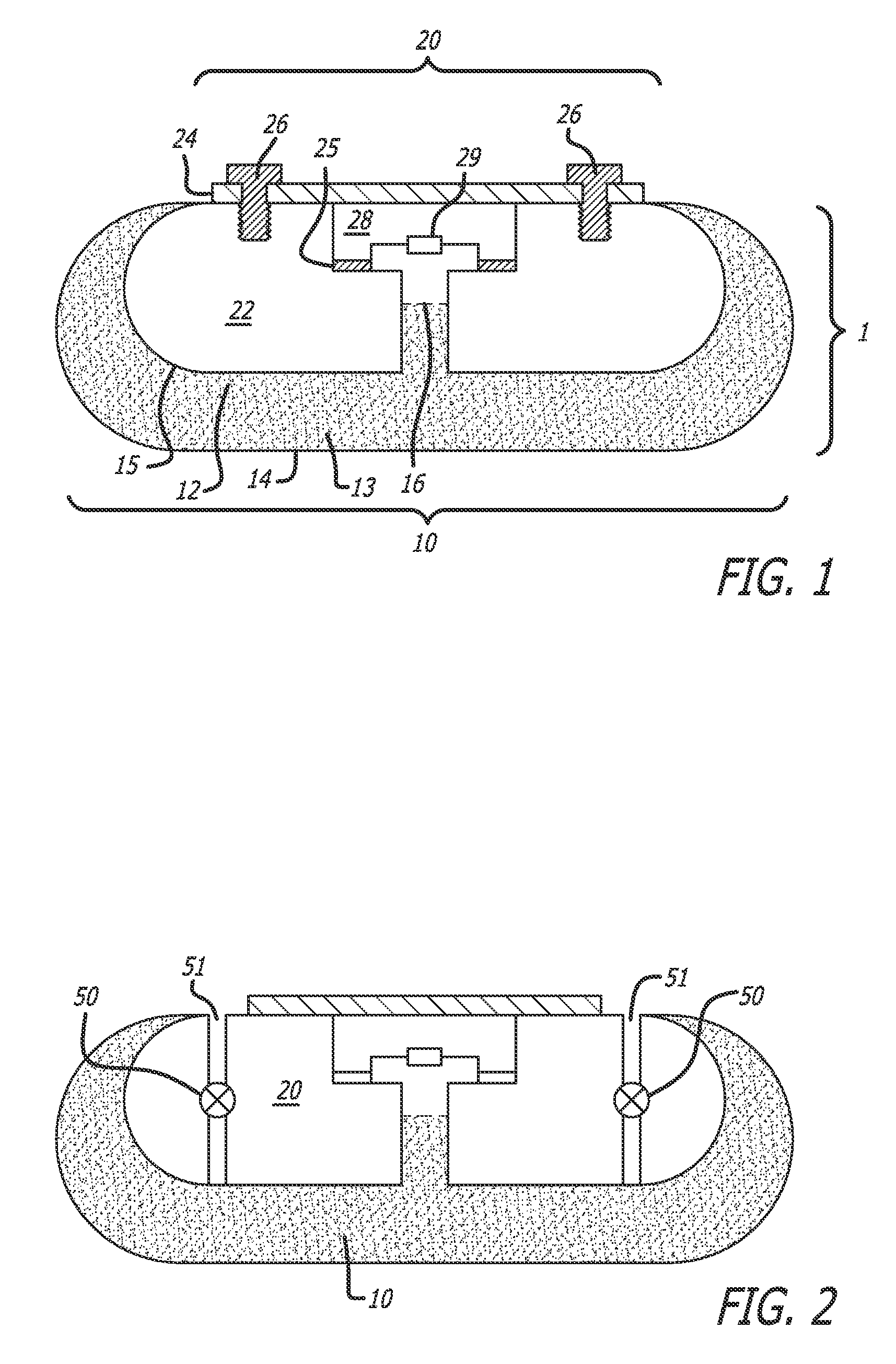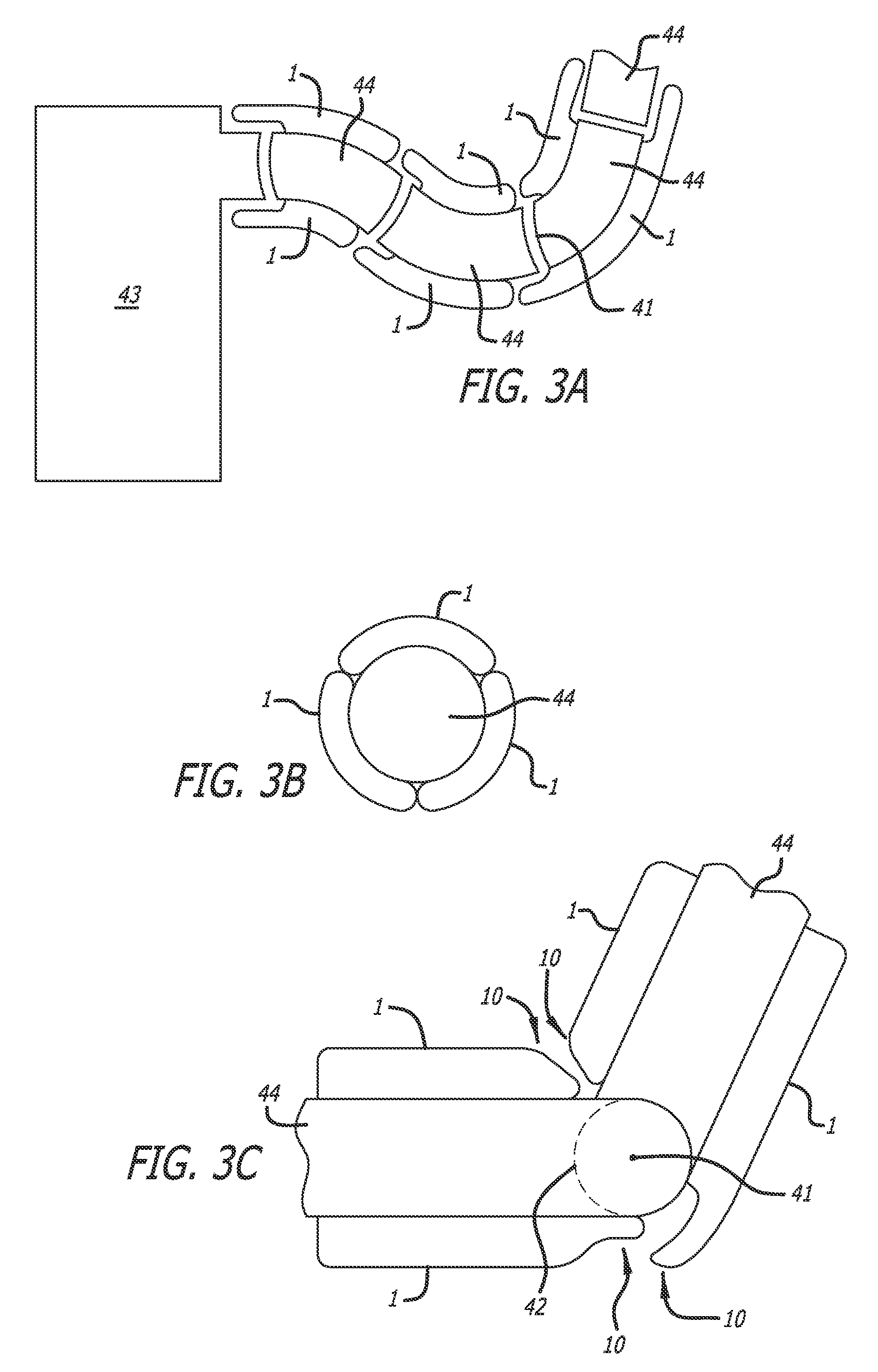Compliant tactile sensor with fluid-filled, sponge-like material
a technology of fluid-filled sponge-like materials and tactile sensors, which is applied in the direction of instruments, measuring devices, and apparatus for force/torque/work measurement, etc., can solve the problems of slow algorithm for machine vision, prone to errors, and robots may be unable to carry on a broad array of important delicate tasks
- Summary
- Abstract
- Description
- Claims
- Application Information
AI Technical Summary
Benefits of technology
Problems solved by technology
Method used
Image
Examples
Embodiment Construction
[0052]Illustrative embodiments are now described. Other embodiments may be used in addition or instead. Details that may be apparent or unnecessary may be omitted to save space or for a more effective presentation. Some embodiments may be practiced with additional components or steps and / or without all of the components or steps that are described.
[0053]Various compliant tactile sensors and associated robotic systems are now described. They may provide a sensitive yet robust means to sense contact between a robotic or prosthetic appendage and other objects. The design and electrical connections may be very simple. Contact surfaces on a robotic or prosthetic appendage may be compliant, rather than hard. There may be sensorized contact surfaces that have arbitrary shapes. The compliant tactile sensor may be produced in arbitrary shapes at low per-unit costs. The compliant tactile sensor may provide a high degree of sensitivity to detecting contact, while a low incidence of false-posit...
PUM
| Property | Measurement | Unit |
|---|---|---|
| stalling forces | aaaaa | aaaaa |
| force | aaaaa | aaaaa |
| flexible | aaaaa | aaaaa |
Abstract
Description
Claims
Application Information
 Login to View More
Login to View More - R&D
- Intellectual Property
- Life Sciences
- Materials
- Tech Scout
- Unparalleled Data Quality
- Higher Quality Content
- 60% Fewer Hallucinations
Browse by: Latest US Patents, China's latest patents, Technical Efficacy Thesaurus, Application Domain, Technology Topic, Popular Technical Reports.
© 2025 PatSnap. All rights reserved.Legal|Privacy policy|Modern Slavery Act Transparency Statement|Sitemap|About US| Contact US: help@patsnap.com



